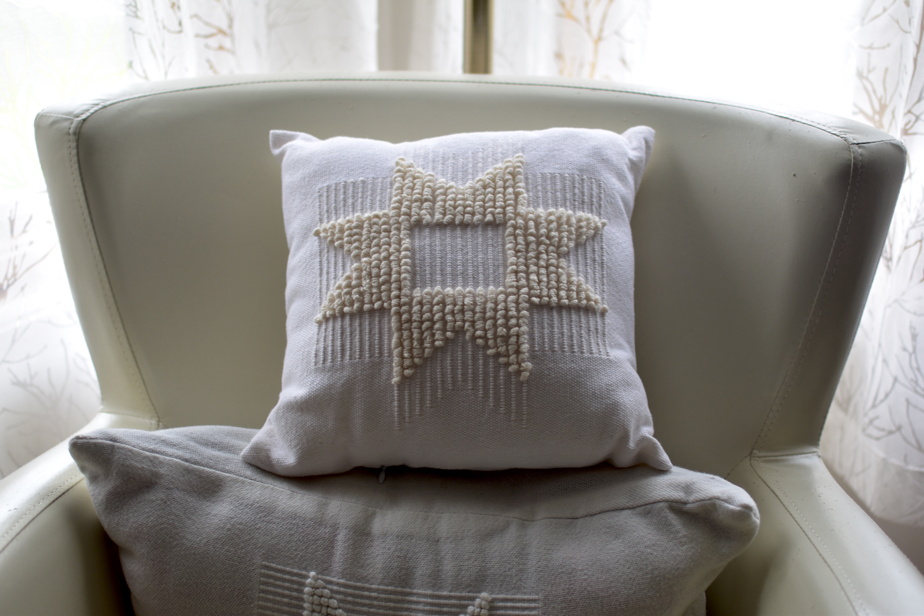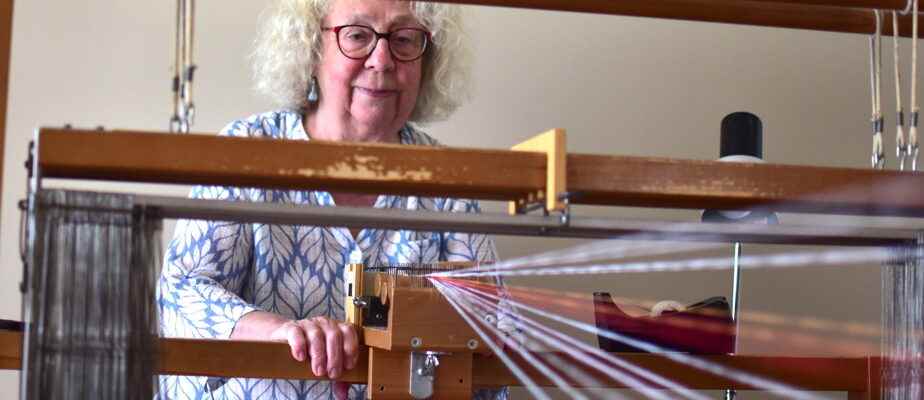(Clermont) It is older than New France. The catalogne, this blanket made up of strips, has adorned beds or served as carpets from generation to generation. One of the few craftswomen who still carry on this tradition recently wove her last great catalogne. The Press met her.
Posted at 12:00 p.m.
Anne-Marie Hamel does not hide her sadness. She is about to experience a little mourning. After having produced a hundred large catalognes for decades, it is now weaving its last.
“Catalonia is full of threads, dust, and it gets into my lungs. For three years, I have suffered from asthma. I am in the process of eliminating the risk factors, ”said the 67-year-old woman, met at her home in Clermont, in Charlevoix.
“I’m going to be heartbroken, but it’s not good for my health. »
The weaver will continue to weave. But it will no longer make those large catalogs which cover the beds and which heritage enthusiasts crave.

PHOTO GABRIEL BÉLAND, THE PRESS
“Catalonia is full of threads, dust, and it gets into my lungs. For three years, I have suffered from asthma,” says Anne-Marie Hamel.
She is going to leave her big loom to a younger man. She hopes he will continue this ancestral technique which, without being lost, is not nearly as popular as before.
“If you go to Estrie, it’s more the English influence, it’s more quilting. But in the eastern regions, it still weaves, ”says Anne-Marie Hamel.
It never stopped, Catalonia, in Charlevoix, Bas-Saint-Laurent, Gaspésie, Saguenay…
Anne-Marie Hamel, weaver
The catalogne is made up of strips woven together. The technique was probably “imported by French mercenaries, fighting under the banner of the kings of Spain”, wrote ethnologist Robert-Lionel Séguin in 1961, hence its name.
-

PHOTO GABRIEL BÉLAND, THE PRESS
Catalonia designed by Anne-Marie Hamel
-

PHOTO GABRIEL BÉLAND, THE PRESS
The catalognes are made with strips most of the time cut from old reused fabrics.
-

PHOTO GABRIEL BÉLAND, THE PRESS
Mme Hamel found a man who wanted to take up the great trade needed to make the great catalognes.
1/3
Then, the French settlers brought the technique here. The first mention of Catalonia dates back to 1634, in the Jesuit Relations. At the time of her death in 1673, the co-founder of Montreal, Jeanne Mance, owned a “large white Couverte de Catalougne”.
“It is an artisanal production which, in the 1920s and the 1930s, enabled farmers to survive,” said Michel Laurent, former curator of textiles at the Musée de la civilisation, in an interview. “With the development of tourist routes, there were kiosks on the side of the roads and people sold their products, including catalognes. »
The catalogne, made with strips of scraps, also made it possible to reuse old clothes. “Nothing was wasted. It was the maximum use of fibres,” notes Mr. Laurent.

PHOTO GABRIEL BÉLAND, THE PRESS
Despite changing fashions, Catalonia continues to hold a special place in the hearts of Quebecers.
“In half an hour, it was gone”
Anne-Marie Hamel was not born into a rural family. She grew up in Montreal then moved to Charlevoix in 1975, “in the hippie years”. “I joined a circle of women farmers and learned to weave,” she says.
She has since become one of the most prominent weavers in Quebec. Then she started making her big catalognes, those pieces that were traditionally used on beds.
The day of our visit, she weaves her last. On the large loom, given the size of the piece, she must be helped by her friend Huguette Dufour.
I find it enveloping, a catalogne. Ever since I’ve been born, I’ve seen catalognes on the beds. My mother used to do that. It’s reassuring, a catalonia.
Huguette Dufour
She’s not the only one to think so. Despite changing fashions, Catalonia continues to hold a special place in the hearts of Quebecers. “When I arrived with catalognes at the market, in half an hour it was gone”, says Mme Hamel, who divides his weekends between the Baie-Saint-Paul market and the La Malbaie market.
Sometimes customers touch and sigh. “It brings back memories for them. Some lament. “Once I saw a woman from Gaspésie who said to me: ‘I can’t find any more here.’ »
For a single queen-size catalonia, she estimates it took 20 hours of cutting, then 6 hours of weaving together. “A catalogne, you can’t sell that for more than $350. It’s not expensive an hour,” she said.
“One day, a woman came to the market, she asked me the price. At that time, I was selling them for $300. She gave me $100 and said, “My husband is coming, you tell him it’s $200, okay?” “says M.me Hamel laughing.
A lost heritage
Anne-Marie Hamel is worried about the future of weaving. She also practices the buttoned Charlevoix, a technique threatened with extinction. She intends to continue for a long time. With the support of the Government of Quebec, she even began to give courses to pass on this technique.

PHOTO GABRIEL BÉLAND, THE PRESS
Cushion made of Charlevoix buttoned. Anne-Marie Hamel notably wove 5,000 towels and a hundred cushions in Catalonia for the Le Germain Charlevoix hotel.
“It’s a heritage treasure that is disappearing,” notes Michel Laurent. Mme Hamel is one of the last in the Charlevoix region to make buttons for sale. »
The man worries less about the future of good old Catalonia. You can still find them for resale, and several circles of women farmers still make them.
But some circles of women farmers are closing, laments Anne-Marie Hamel. “There aren’t many women who make catalognes anymore,” notes the weaver. There are not many young people who weave. »

PHOTO GABRIEL BÉLAND, THE PRESS
Anne-Marie Hamel very proud of her latest creation
His last great catalog is full of color. Anne-Marie Hamel will not sell it at the market, that one. She has reserved it preciously for her granddaughter who has just been born. Who knows if, when she grows up, catalognes will still be woven in Quebec?

